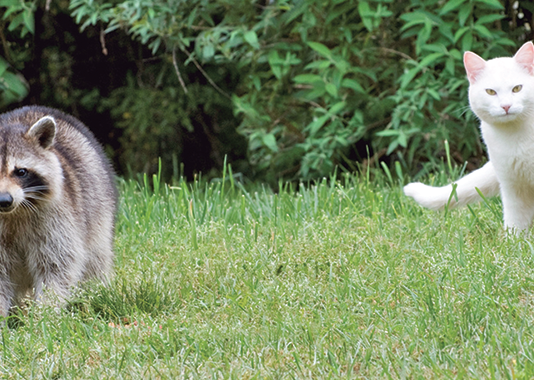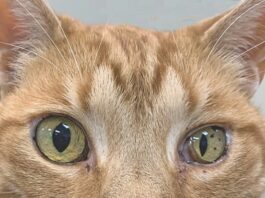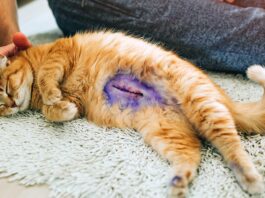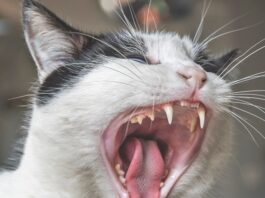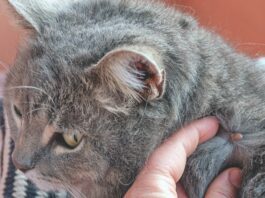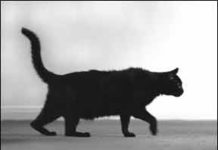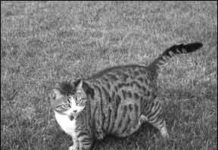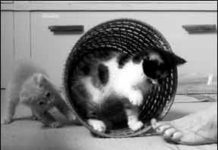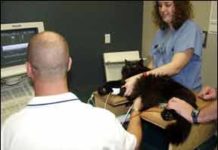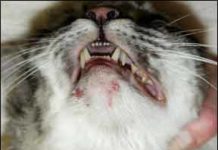Free Cat Litter for a Worthy Cause
World’s Best Cat Litter™ recently announced that Blind Cat Rescue & Sanctuary of St. Pauls, NC was randomly selected from a fan submission to win the first round of GiveLitter™ for the year. The shelter will receive 2012 pounds of litter that will help its hardworking staff clean up after blind cats currently looking for homes.
Ask Elizabeth: May 2012
I’m hoping that you can help me solve a very frustrating problem. My cat Jessica is a six-year-old Siamese. Her skin has become very dry and flakey, and I think it must be very itchy. She’s constantly scratching at herself, sometimes so roughly that little clumps of her coat fall out. I haven’t taken her to see a veterinarian yet, but a neighbor told me that I should be giving Jessica omega-3 supplements. But omega-3 comes from fish oil, and I think that Jessica is allergic to fish, so I’m afraid to do that. Are there any other sources of omega-3? What other ingredients in her food could be making her so uncomfortable?
The Latest on Feline Hyperthyroidism
Into the lives of many cats of a certain age comes a certain diagnosis: hyperthyroidism. Susan Steiner’s cat was no exception. At 12 years of age, Grey’s weight had diminished to a mere five pounds. Faced with the less-than-appealing choices of invasive surgery or expensive radiation treatment, she opted for a third choice: medication. Every morning and every evening, Ms. Steiner pulverized a half-tablet of methimazole, carefully mixed the powder with the most appealing canned cat food she could find, and hand fed it to her senior cat. That was 15 years ago. Changes that have since occurred in the world of hyperthyroidism might have made her choices different today.
Short Takes: April 2012
In this recent study (“Prevalence of fecal-borne parasites detected by centrifugal flotation in feline samples from two shelters in upstate New York,” in Journal of Feline Medicine and Surgery, 2011), fecal samples from 1,322 cats from two shelters and foster homes in upstate New York were processed for parasite detection over three-and-a-half years. All samples were processed by zinc sulfate and sugar double centrifugal flotation.
Diagnosis: Diabetic Neuropathy
If you ever try to move around your home very, very quietly — to avoid waking a slumbering child, for example — you may be in the habit of walking on your tiptoes. Normally, however, you will employ what’s termed a “plantigrade” stance. That is to say, you’ll stand and walk with the entire sole of your foot touching the floor. Cats are different from you and your fellow humans in this respect. Unless they’ve suffered an injury or are afflicted with a physical condition that makes it painful or physically impossible for them to do otherwise, they will, by nature, walk on the front part of their feet. Notable among the feline disorders whose presence is signaled by a cat’s inability or unwillingness to walk on its toes is a condition called diabetic neuropathy.
Obesity: A Major Health Risk
For the first several years of her life, your cat Tina was slim, agile and remarkably athletic. In the past year or so, however, Tina, formerly light on her feet, has become heavy in her body. You can no longer see or feel her ribs. She seems to have accumulated a pad of fat over her spine, and it even appears that shes developing quite a potbelly.
Deworming: A Must for Kittens
Few things in the life of a cat owner are sweeter than the sight of a newborn kitten, weighing just a few ounces, its eyes tightly shut, nursing contentedly at its mothers nipple. A healthy kitten will nurse every 20 minutes or so, typically for about eight weeks, during which time its mothers milk will fulfill all of the little animals nutritional needs
Feline Cardiomyopathy: Serious
To the average cat owner, cardiomyopathy may sound like a scary mouthful of a word — but all it essentially means is disease of the heart muscle. And cardiomyopathy is not one single disorder, but instead a family of heart conditions that can be classified into three types: hypertrophic cardiomyopathy (HCM); dilated cardiomyopathy (DCM); and restrictive cardiomyopathy (RCM). The causes, signs and treatments are different for each of the conditions, and rate of progression and prognosis also vary between individual cats and between breeds.
Feline Acne: All Cats Are At Risk
Despite its typical durability, a cat’s skin is subject to a wide array of disorders. Most of these conditions, in themselves, are of minor consequence and readily treatable. But all of them merit examination by a veterinarian, since they can signal the presence of a serious infection or other potentially life threatening systemic health problem. Among the various feline skin conditions that might be overlooked — or ignored — by an owner is acne. This disorder, which is characterized by the emergence of tiny black eruptions (blackheads) on a cat’s chin and lips, is a condition that can afflict both male and female cats of all ages and breeds.
Short Takes: March 2012
Boxiecat is a new online subscription cat litter service that can help save trips to the grocery store, and puts an end to lugging heavy bags of litter. Considering that there are 86.4 million pet cats living in the United States, this service can certainly fill the necessity for litter in a new and more convenient way — especially for the elderly or the handicapped pet owner.
Diagnosis: Feline Hyperesthesia
You’re nestled comfortably in your favorite chair with your cat dozing peacefully in your lap. You’re petting her gently, stroking her back. You’re happy, she’s happy — but suddenly she lets out a horrific howl and springs violently into the air with her claws out, furiously throwing her head about and trying to bite her own backside as if it had attacked her. Then the episode stops as suddenly as it began — she abruptly flops to the floor and, with a few convulsive jerks, passes out.
Helping Your Child to Grieve
Kids and pets are like peanut butter and jelly — it’s hard to imagine one without the other. They can quickly become the best of friends, playing for hours on end. A child’s best animal friends seem to know to be extra gentle with him, and they are often endlessly patient — calmly swallowing their pride and allowing themselves to be dressed in doll’s clothes, take a bubble bath or just be hauled around on the child’s whim. As such, the attachments between children and their pets can be very real and very strong, making it especially difficult when the pet dies

